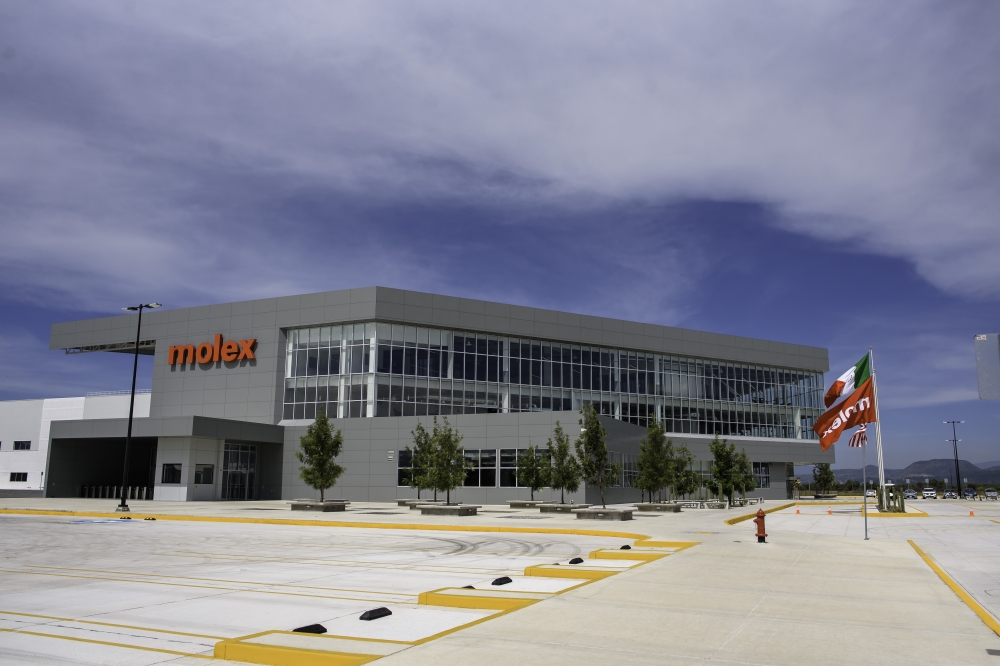Molex Expands North American Manufacturing Capabilities

Molex, a global electronics leader and connectivity innovator, has announced a major expansion of its global manufacturing footprint with the opening of a new factory in Guadalajara. The new 60,000 square-meter facility nearly doubles Molex’s footprint and manufacturing space in Guadalajara, with the potential to increase capacity by an additional 100,000 square meters to support advanced engineering and large-scale production for automotive, transportation and industrial customers in North America and around the world.
“Our history in Mexico spans more than 50 years, earning Molex a strong reputation for developing world-class facilities and engineering talent to deliver customer-focused solutions,” said Mike Bloomgren, SVP, president, Transportation & Industrial Solutions, Molex. “The opening of a new factory in Guadalajara dedicated to transportation customers further enhances our ability to effectively and economically address the most complex challenges in automotive connectivity, battery management, vehicle safety and zonal architectures.”
Investing in Factory-of-the-Future Capabilities
Molex has invested $130 million in developing this state-of-the-art facility, which features new tools, technologies and processes to meet unprecedented demand for interconnect solutions for tomorrow’s Electric Vehicles (EV), Advanced Driver Assistance Systems (ADAS) and connected vehicles. The fully integrated plant incorporates factory-of-the-future capabilities, including advanced production-line automation, autonomous robots, cutting-edge molding and assembly tools, as well as complete engineering and operations to optimize product development, supply chain management, quality testing and volume manufacturing.
The availability of onsite reliability and metrology lab testing will empower local engineers to improve product designs and speed development cycles. A cornerstone of Molex’s customer-centric approach, these local labs reduce rework costs and time at critical product-development stages. The use of innovative tests, simulations and analyses are designed to deliver industry-leading quality, streamline product certifications and accelerate time to market.
As part of Molex’s overarching commitment to this region, an amenity-rich environment has been created to attract and retain highly skilled, local engineering talent. The company plans to grow its headcount from 200 employees to 300 by the end of the year. Moreover, the new Guadalajara plant complements the global footprint and customer focus of Molex’s Transportation & Industrial Solutions division, which includes facilities and technical centers in Canada, China, France, Germany, India, Italy, Japan, the Philippines, Poland, South Korea and the United States.
Customers Benefit from Supply Chain Optimization
Molex’s Guadalajara expansion strategically shortens supply-chain cycles by enabling the local team in Mexico to expedite supply-and-demand decisions to mitigate product development and manufacturing risks. The opportunity to increase and align multiple, geographically dispersed supply sources improves Molex’s overall resiliency in addressing changing market dynamics and disruptions on behalf of automotive customers globally.
Automotive Experience Counts
Molex plays a vital role in the automotive industry, delivering the reliability, quality and innovations needed to ensure flawless connectivity for a vast array of applications. Dedicated automotive facilities across three continents enable Molex to offer unparalleled support to 30 of the largest global vehicle OEMs and hundreds of Tier 1 and 2 automotive suppliers. Continuous collaboration across the company aligns technology and talent in automotive, data communications, industrial and mobile consumer electronics to deliver the most diverse product portfolio on the market, encompassing ADAS, connected mobility, digital cockpits, electrification, high-speed networking, infotainment systems, vehicle antenna systems, noise cancellation sensing, vehicle-to-everything communications (V2X) and zonal architectures.





























